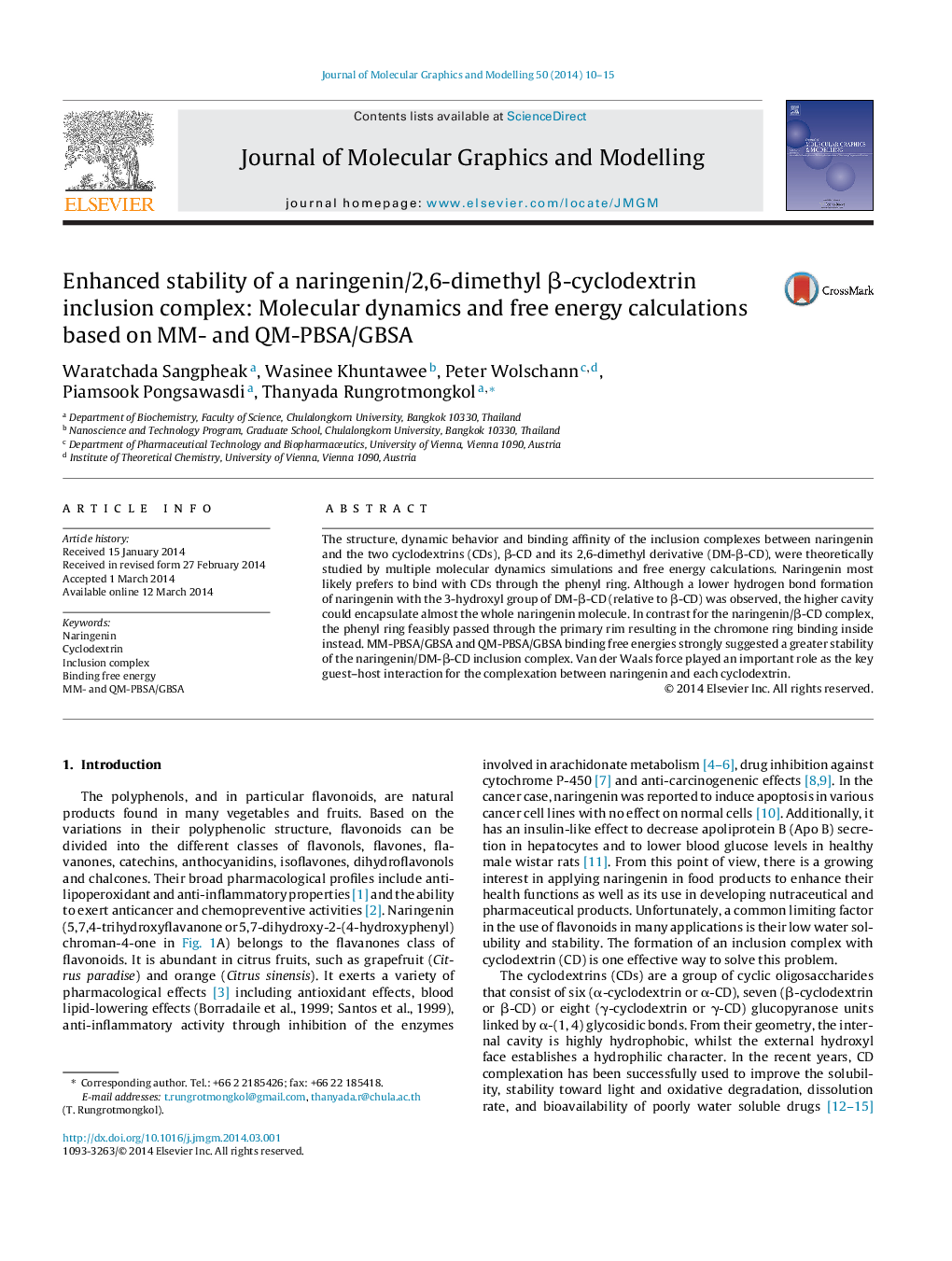| Article ID | Journal | Published Year | Pages | File Type |
|---|---|---|---|---|
| 443339 | Journal of Molecular Graphics and Modelling | 2014 | 6 Pages |
•Naringenin preferentially binds with cyclodextrin through its phenyl ring.•VdW force plays an important role in a formation of inclusion complex.•MM- and QM-PBSA/GBSA methods indicate the binding affinity of naringenin/DM-β-CD complex is higher than naringenin/β-CD complex.
The structure, dynamic behavior and binding affinity of the inclusion complexes between naringenin and the two cyclodextrins (CDs), β-CD and its 2,6-dimethyl derivative (DM-β-CD), were theoretically studied by multiple molecular dynamics simulations and free energy calculations. Naringenin most likely prefers to bind with CDs through the phenyl ring. Although a lower hydrogen bond formation of naringenin with the 3-hydroxyl group of DM-β-CD (relative to β-CD) was observed, the higher cavity could encapsulate almost the whole naringenin molecule. In contrast for the naringenin/β-CD complex, the phenyl ring feasibly passed through the primary rim resulting in the chromone ring binding inside instead. MM-PBSA/GBSA and QM-PBSA/GBSA binding free energies strongly suggested a greater stability of the naringenin/DM-β-CD inclusion complex. Van der Waals force played an important role as the key guest–host interaction for the complexation between naringenin and each cyclodextrin.
Graphical abstractBased on MM-PBSA/GBSA and QM-PBSA/GBSA methods, naringenin significantly better binds inside the cavity of 2,6-dimethyl-β-cyclodextrin than that of β-cyclodextrin mainly through vdW interaction.Figure optionsDownload full-size imageDownload high-quality image (123 K)Download as PowerPoint slide
